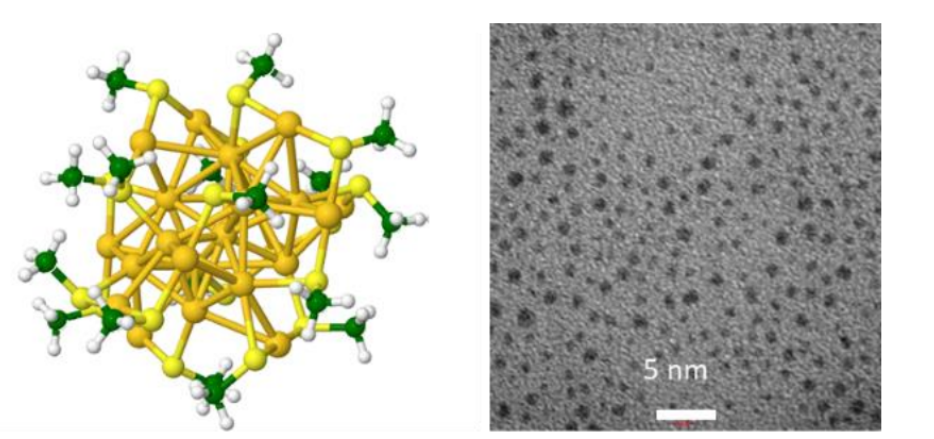YOUR BROWSER IS OUT-OF-DATE.
We have detected that you are using an outdated browser. Our service may not work properly for you. We recommend upgrading or switching to another browser.
"Atomically precise gold nanoclusters as new probes in single-photon and multiphoton imaging" is a Sonata Bis 9 project financed by National Science Centre in Poland. (2020-2025)
Main coordinator: PhD DSc eng. Joanna Olesiak-Bańska, prof. WUST
Nanoparticles are crucial elements of various smart, advanced, photoresponsive materials and noble metal nanoparticles is one of the most significant groups in this area. Noble metal nanoparticles can present unique properties unavailable with other structures, both organic and inorganic. If we reduce the size of gold or silver below a few hundreds of nm, widely known plasmonic properties start to appear. Plasmons are related to electron gas oscillation localized on a nanoparticle, excited by light. They modify the electromagnetic field surrounding nanoparticle and can easily change properties of any molecule which approach the surface, eg. increase the brightness of a fluorophore or enhance Raman scattering signals. However, if we keep on reducing the size of nanoparticles below ~2 nm, we lose plasmonic properties and enter the interesting and largely unknown world of nanoclusters. The presented project aims at understanding optical properties of these nanostructures and recognize the possibility of application of nanoclusters in bioimaging and biosensing.
Atomically-precise noble metal nanoclusters (NCs) due to strong quantum confinement effect present properties on the border between organometallic clusters and bigger metal nanoparticles. They resemble molecules, with discreet energy levels, but differ from organic and organometallic compounds due to enhanced stability, tunability of photoluminescence, reactivity etc. Nanoclusters are composed of a precisely defined number of metal atoms (gold or silver), stabilized by a defined number of ligands, usually thiols (Fig.1). A change of even one atom can change dramatically the structure and properties of a nanocluster, so crucial part of the project will be a precise synthesis, purification and evaluation of obtained products.
Then, we will investigate their optical properties in one-photon and multiphoton regime, so under continuous wave and pulsed laser illumination. What is significant, we will provide quantitative description of optical response, which is scarcely available in the literature. Only with such parameters we will be able to explain how size and composition influence optical properties of NCs and how to optimize the structure in order to obtain favourable properties for specific applications, especially in bioimaging and biosensing. Due to combination of a small size with high twophoton brightness, photoluminescence and chirality, which may serve as an additional discrimination factor in biological environment, gold and silver nanoclusters seem to have a huge potential as markers and probes in one-photon and multiphoton fluorescence microscopy. The results of this project will determine how good is NCs performance in comparison to standard dyes and bigger nanoparticles and what structure of nanoclusters gives the most favourable properties.

Fig. 1. Structure of thiol-stabilized gold nanocluster with 25 Au atoms (yellow – gold, green – sulphur atoms) and transmission electron microscopy image of Au25 nanoclusters.